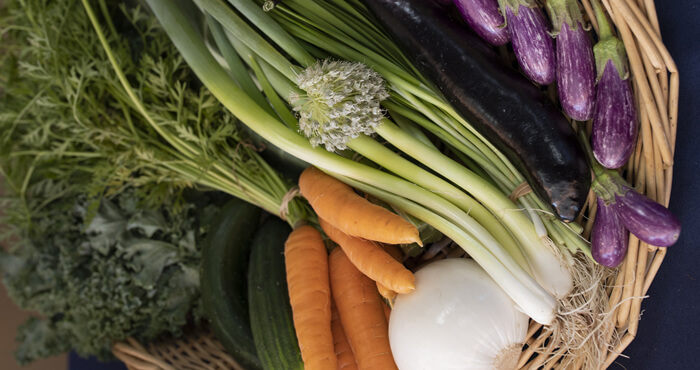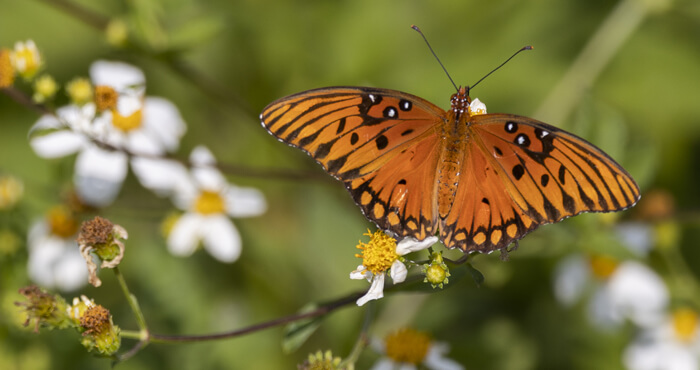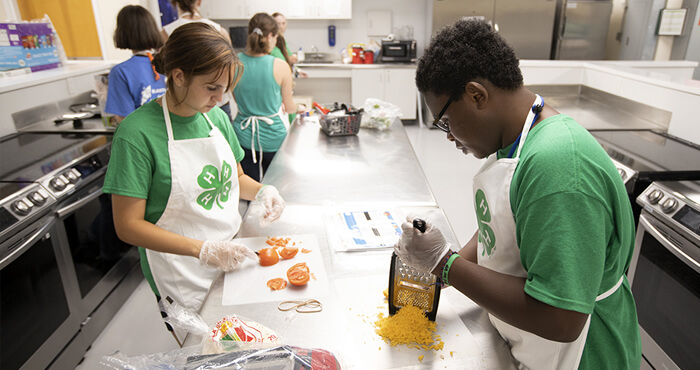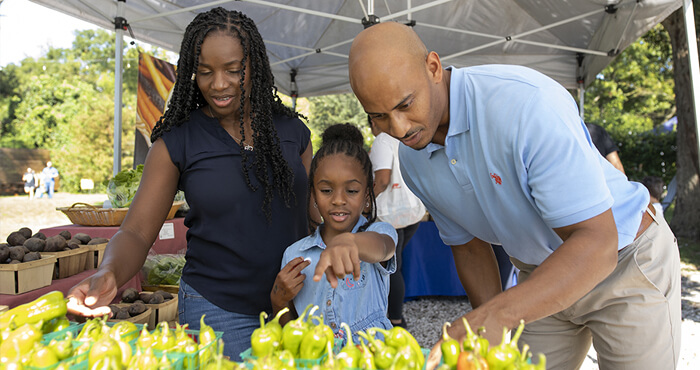
Fall Herbs
Herbs are grown for their special flavors and aromas. They also add seasoning and taste to food. Fall is the perfect time to plant a number of common herbs in your Florida garden.
Growing Herbs at Home
Most of the common herbs can be grown seasonally in Florida for home use. In South Florida, many herbs may be grown in the home garden throughout the year.
Herbs are perfect for container gardening because the plants are small and only a small portion is needed at one time. You can also use them as border plantings or as part of a flower garden. If they receive enough sunlight, a few herbs can even be grown indoors.
Herbs in containers take the same care recommendations as growing vegetables in containers.
Herbs for Fall Planting
The following herbs are perfect for planting in the fall all throughout the state. Some may even be planted during the winter months in South Florida.
Seeds and transplants of most common fall herbs are generally available at local retail stores or seed retailers. Some may be harder to find but can generally be obtained from herb specialty businesses.
Anise
Anise (Pimpinella anisum) is grown for its seeds. It has many white flowers and is attractive in a flower garden or as a border plant. Leaves may be used fresh.
Harvest the seeds when they turn brown. Separate the seeds from the fruiting structures (umbels). You may need to dry the umbels before the seeds can be separated, cleaned and stored.
Basil
Sweet basil (Ocimum basilicum) is a pleasant-smelling herb with a spicy taste. The tender leaves may be used fresh at any time or dried along with the white flowers.
Borage
Borage (Borago officinalis) is also known as "burrage" and "common bugloss." The plant has a cucumber-like odor and flavor. It grows into a large, spreading plant with whitish hairy bristles and blue star-like flowers. The flowers may be used fresh as a garnish for beverages and salads.
Chervil
Chervil (Anthriscus cerefolium) is grown for its aromatic, decorative leaves. It looks like parsley in growth habit but tastes and smells like tarragon. Some forms of chervil have thick roots that can be eaten like carrots. Pick the leaves as needed to garnish salads, soups and other foods.
Coriander
Coriander (Coriandrum sativum) is a grown mainly for its aromatic seeds. The fresh foliage of coriander is also used in cooking and is called cilantro.
When the tiny fruits mature and turn brown—about three months after seeding—remove them from the plant and dry them on a screen. Once dried, thresh (separate) the seeds and store them in a dry, airtight container.
Dill
Dill (Anethum graveolens) is a flavoring plant that gives dill pickles their name. It is a strong-smelling, fennel-like plant with yellow flowers that develop into fruiting structures. The fruiting tops, leaves and stems may be used fresh or dried.
Fennel
The term "fennel" is confusing because there are two kinds. Common fennel (Foeniculum vulgare) is grown for its shoots, leaves, and seeds and is used as flavoring agents in foods. Florence fennel (Foeniculum vulgare var. azoricum) is grown mainly for its thickened, bulbous leaf base, which is eaten as a cooked vegetable.
Except for the swollen, above-ground base of the leaves on Florence fennel, the two are very similar in appearance and their licorice-like flavoring. Both plants look like dill, with narrow, fine leaves, bright yellowish-green hollow stems, and umbrella-like seed structures.
Garlic
Garlic (Allium sativum) is similar to onion, except that instead of producing a single bulbous stem, it produces a bulb made up of many spicy, pungent cloves. Growing garlic is similar to growing onions.
The suggested planting time for garlic is October through January. Plant garlic by dividing the bulb and planting the cloves.
Ginger
Ginger (Zingiber officinale) is a perennial plant that produces well from Homestead to Pensacola. It grows from thick underground rhizomes that are very aromatic.
Harvest the roots about a year after planting, when the stalks die down. After cleaning, scraping, boiling and peeling the roots; dry them in the hot sun for about a week.
Lovage
Lovage (Levisticum officinale) smells, tastes and looks like celery leaves. The leaves and stems are used fresh as needed. Other useful parts are seeds and oil extracted from the roots.
Parsley
Parsley (Petroselinum crispum) grows well in Florida gardens. The leaves are used fresh or dried as flavoring or a decorative garnish. The rooting types are useful as a cooked vegetable, particularly in soups.
Rosemary
Rosemary (Rosmarinus officinalis) is a hardy perennial with a spicy aroma. Small pink flowers form in the second or third year. Use the leaves fresh or dried in cooking.
Sage
Sage (Salvia officinalis) contains grayish-green, oblong leaves. Purple flowers bloom in the second year. The leaves can be used fresh or dried. In the landscape, sage is an attractive, low-growing border plant.
Thyme
Thyme (Thymus vulgaris) has a wide variety of shapes and sizes. Usually, it is a low-growing plant with tiny, gray-green leaves. Purplish flowers are formed at the ends of the stems.
Location
Only a small amount of space is required for an herb garden because you will only need a few plants of each type of herb.
Perennial herbs live from year to year, so group these plants together where they will not be disturbed by tilling or digging in the rest of the garden. Annual herbs also may be grouped together so that you can easily replant each year.
Propagation
Annuals complete their life cycle in one season. Biennials take two seasons to complete their life cycle. Perennials live for longer than one season. They also flower and produce seeds throughout their life cycle.
Most annual and biennial herbs are grown from seed rather than transplants. Perennials, however, grow best when they are started in plant beds or boxes using seed or cuttings, then transplanted into the garden or growing containers.
Preparation & Care
Most herbs will grow under the same sunlight and soil conditions as vegetables. Check our vegetable gardening guide for more specific information about soil preparation, liming, fertilizing and watering.
Some herbs are sensitive to soil moisture conditions and need special care. Sage, rosemary, and thyme require a well-drained, slightly moist soil, while parsley and chervil grow best in damp soil. Herbs are shallow-rooting, so adding organic matter to sandy soils will be beneficial.
When left unattended, some herbs may spread and can become weedy in appearance.
Harvesting & Curing
Depending on the herb, its seeds, leaves, flowering tops, or roots are used for flavoring purposes. The flavor comes from oil contained in these parts. Flavors are retained longer if the herbs are harvested at the right time and properly cured and stored.
Leaves
Young, tender leaves can be gathered and used fresh at any time during the season. To save the leaves for later use, harvest them when the plants begin to flower. Dry the leaves in a well-ventilated, darkened room. If the leaves are dusty or gritty, wash them in cold water and drain them thoroughly before drying.
Seeds
Harvest seeds when the plants are mature or when their color changes from green to brown. You may want to leave a few of the annual herbs undisturbed, so they flower and the seeds mature for planting the next season.
Dry the seeds thoroughly before storing them to prevent molding, loss of quality, or loss of viability for planting. After curing the seeds for several days in an airy room, dry them in the sun for a day or two.
Storage
When the leaves or seeds are dry, remove stems and any other debris. Pack the herbs in a glass, metal, or cardboard container that can be closed tightly to preserve the aroma and flavor. Glass jars should be painted or stored in a dark room to prevent the green leaves from being bleached by light.
For more information about herbs or gardening in general, contact your county Extension office.
Resources
Other UF/IFAS Sites
- Gardening Solutions
- Entomology and Nematology Department
- Environmental Horticulture Department
- FAWN: Florida Automated Weather Network
- Florida-Friendly Landscaping™ Program
- Florida Master Gardener Program
- IPM Florida
- Pesticide Information Office
UF/IFAS Publications
- Florida-Friendly Landscaping™ Program
- Central Florida Gardening and Landscaping Fact Sheets
- Starting a Garden
State & Federal Agencies
- Florida Department of Agriculture and Consumer Services (FDACS)
- Florida Department of Environmental Protection (FDEP)
- Florida Energy Systems Consortium (FESC)
- U.S. Environmental Protection Agency (EPA)
- USDA Plant Hardiness Zone Map--U.S. National Arboretum
Organizations & Associations
- American Community Gardening Association
- American Horticultural Society
- Florida Native Plant Society
- Florida Nursery, Growers and Landscape Association (FNGLA)
- North American Native Plant Society
Other Sites & Publications
UF/IFAS Mobile Web Apps



.jpg)

.jpg)
